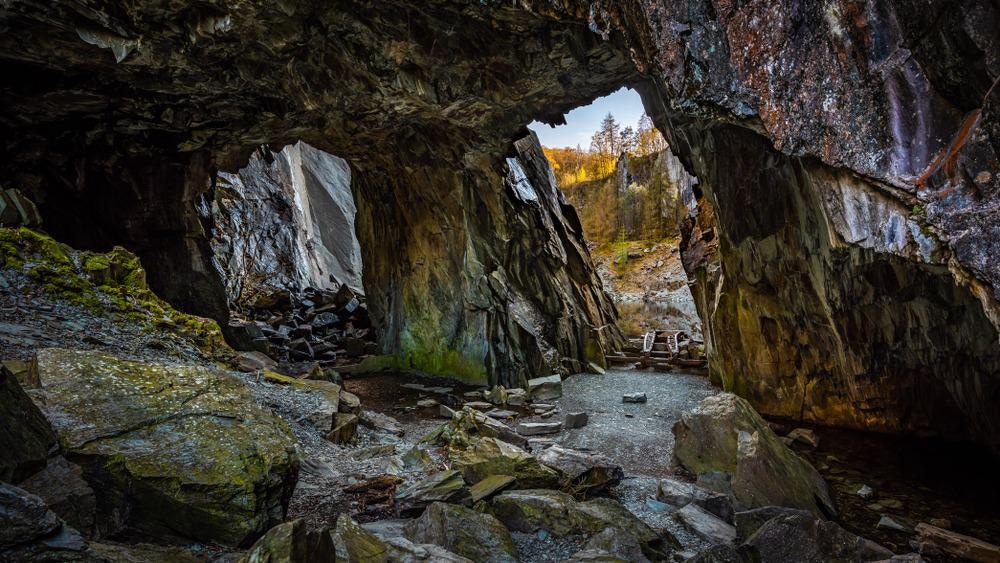To plan mines properly, a deep understanding of deposit geology is critical. Knowledge of geology in deep mines allows mine planners to locate reserves and make informed decisions. This article will explore the subject of 3D subsurface mapping and its advantages for underground mining, and will provide a brief overview of Exodigo’s innovative work in the field.

Image Credit: mountaintreks/Shutterstock.com
What is 3D Subsurface Mapping?
The mining industry is increasingly taking advantage of digital solutions such as remote imaging and artificial intelligence.
3D subsurface mapping is an integrated technology that helps engineers comprehensively interpret deposit geologies. Innovation in this field is being driven by several companies, and it is fast becoming a multidisciplinary, coordinated field of geotechnical and mining research.
Numerous geoscientific and physical methods are used to derive the spatial and temporal data necessary for successfully mapping a deposit to produce a 3D image of the site. Using procedures such as boreholes, 3D coordinates, continuous variables such as contaminants, ore grades, pressure, temperature, element concentrations, and variables such as aeration and lithology can be gathered.
Data derived from exploratory resource investigations can be integrated with seismic data, satellite imagery, surface maps, and production data to build a comprehensive picture of the area in which mining operations will occur.
Laser scanning, ground-penetrating radar, autonomous vehicles, and remote, connected sensors provide engineers and mine planners with a complete dataset and intimate knowledge of underground environments that help their decision-making processes.
How Can This Field Help the Mining Industry?
This type of mapping has significant advantages over traditional 2D mapping methods. Two-dimensional maps can misrepresent complex relations in deposits and conveying economic potential to stakeholders can be challenging.
The complete picture that a 3D map gives engineers and mine planners is invaluable and gives them a complete understanding of the multivariate nature of the complex geology of underground ore deposits.
The rapid exhaustion of surface deposits has facilitated the need for exploiting ever-deeper reserves of critical resources. However, deep reserves are more challenging to retrieve and process than surface deposits. An intimate understanding of the properties and structure of underlying geology is essential if new mines are to be successful.
3D mapping methods help engineers accurately visualize underground environments, providing crucial information that aids the planning of economically viable, productive, and safe mines.
Orebody modeling, hydrocarbon reservoir mapping, contaminant tracking, rock delineation, efficient workflow planning, geohazard analysis, and exploratory data analyses are all made easier using advanced 3D mapping of complex deposits.
Subsurface Mapping with Exodigo
Exodigo, an Israeli tech company, is one of the companies driving innovation in this field. Their technological solutions include imaging, sensors, and AI, and the company uses an integrated approach to mapping underground deposits. In February this year, the company launched a subterranean mapping platform for the construction industry after acquiring $29 million in seed funding.
Exodigo has plans to move into the mining sector with products that provide a holistic solution for constructing a complete map of underground deposits. Traditionally, the main approach for retrieving information on complex underground deposits is to use multiple core drillings.
The company’s innovative approach is to use sensor fusion. An entire map of the previously unknown deposit can be built from integrated sensor data, giving companies vital information before drilling and construction.
According to a company spokesman, over $100 billion is spent each year on drilling and excavation to determine the size and characteristics of ore deposits, which are largely wasted. Moreover, unnecessary, wasteful exploration efforts cause huge environmental damage and carry a $30 billion price tag for societal costs due to underground infrastructure damage in the US alone.
The company’s proprietary software and the multi-disciplinary expertise of its team, many of whom have experience in the military, are central to Exodigo’s advanced mining industry solutions.
Sensor data from autonomous drones, satellites, and carts are integrated into a single innovative solution package. Exodigo’s proprietary technology provides rapid construction of a complete picture of underground deposits in a scalable manner.
The Future
Several demands have been placed on the modern mining industry, including the need to exploit deep ore reserves, improve sustainability, reduce operational costs, waste, and improve safety for workers.
The industry is increasingly taking advantage of innovative technologies as it tackles these issues in the 21st century. Several companies are working in the mining ecosystem to implement technologies that will aid the continued digital evolution of the industry.
3D subsurface mapping provides a complete solution for the underground mining industry. Ore characteristics, geology, fault occurrences, and voids can be detected and mapped in a holistic, non-invasive process by engineers using connected, digital technologies. Technology such as satellites and autonomous drones, ground-penetrating radar, and remote, connected laser scanning can be utilized by engineers.
References and Further Reading
Evans, S (2022) Exodigo, the new face of subsurface mapping [online] mining-technology.com. Available at: https://www.mining-technology.com/
Irawan, S.D (2013) 2-D Subsurface Imaging Techniques for Deep Ore Mineral Mapping using Geoelectrical and Induced Polarization (IP) Methods. Procedia Earth and Planetary Science, 6 pp.139-144 https://doi.org/10.1016/j.proeps.2013.01.019
Darling Geomatics (2022) 3D Mine Mapping from Surface to Subsurface [online] darlingltd.com. Available at: https://darlingltd.com/blog/3d-mine-mapping-from-surface-to-subsurface/
Disclaimer: The views expressed here are those of the author expressed in their private capacity and do not necessarily represent the views of AZoM.com Limited T/A AZoNetwork the owner and operator of this website. This disclaimer forms part of the Terms and conditions of use of this website.